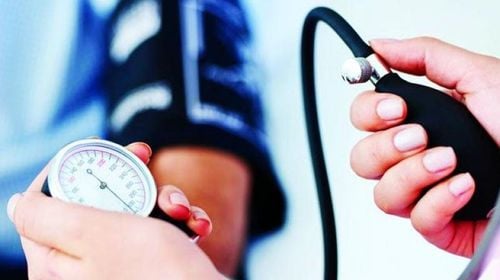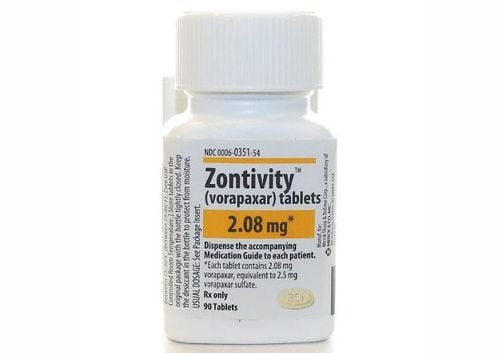This is an automatically translated article.
Posted by Master, Doctor Pham Manh Chung - Head of Imaging Department - Department of Diagnostic Imaging - Vinmec Ha Long International Hospital
Cerebral infarction is a dangerous medical condition, if not examined, diagnosed and treated early, it can leave very serious sequelae for the patient. Multiphase CT can help doctors detect brain damage early, including cerebral infarction and cerebral hemorrhage.
1. What is cerebral infarction?
Cerebral infarction is a type of stroke that occurs due to lack of blood supply to the brain. An ischemic stroke is a process in which a cerebral artery is narrowed or blocked, causing blood flow in the area of the brain due to its distribution to be severely reduced, causing necrosis, dysfunction in that brain area, and symptoms. neurological symptoms corresponding to the affected brain area. In cerebral stroke, cerebral infarction accounts for about 80%, the rest is cerebral hemorrhage accounting for 20%.
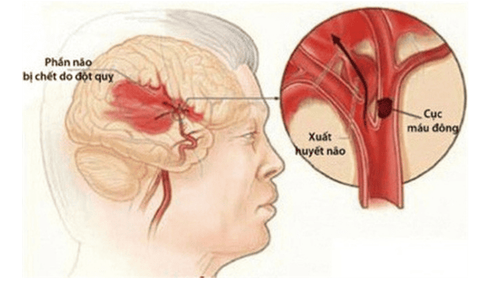
2. Manifestations of cerebral infarction
Focal neurologic symptoms depend on the area and artery involved. General neurological symptoms such as:
Headache, nausea, vomiting Consciousness disorder Paralysis/weakness of the body. Paralysis of the cranial nerves: mouth distortion, drooping eyelids, hemiplegia, slurred speech. Central circular muscle disorders: urinary retention, bed-wetting, constipation Autonomic disorders: vital signs Convulsions, mental disorders Meningeal syndrome: headache, constipation, vomiting, Kernig ( +)

3. Advantages of CT scan of the brain and CT of cerebral arteries to assess cerebral infarction
In cerebral infarction, early diagnosis is especially important, likened to "Time is the brain", that is, the sooner it is diagnosed and treated, the sooner the brain will recover, avoiding so many sequelae. The optimal time for fibrinolytic intervention is the first 4.5 hours of the onset of infarction.
3.1. The role of CT scan of the brain and cerebral vessels in the diagnosis of cerebral infarction
Quick scan time: if only the CT scan of the brain takes about 10-15 minutes, the additional cerebral angiogram to evaluate thrombosis and collateral circulation takes about 30 minutes. CT scanners are common in medical facilities. Can be equipped right on the ambulance, and captured right on the ambulance to diagnose and give the direction of fibrinolytic intervention. The high diagnostic value is particularly distinguishing from hemorrhagic stroke. CT brain angiogram shows the correct location of the thrombus to provide an endovascular interventional strategy to remove the thrombus. Assess collateral circulation of cerebral vessels behind the occlusion to predict the recovery after treatment.
3.2. Signs of cerebral infarction on CT scan
Computed tomography of the brain (CT scan of the brain): in the fulminant phase (first few hours) of cerebral infarction, the changes on the brain CT images are very subtle, the images can be seen. as early as:
Loss of gray matter boundaries Blurred sulcus sulcus Stenosis of Sylvius fissure Loss of insular ribbons Ventricular stenosis and basal cistern Increased density of blood vessels in the area of Willis polygon due to a specific blood clot in the middle cerebral artery . When a brain infarction has formed, the CT scanner will show a reduced density in the cerebral cortex, the subcortical area or the white matter or deep gray matter according to the perfusion control area of the occluded artery.
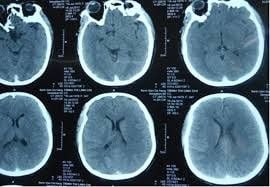
4. Multi-phase CT scan of cerebral arteries to evaluate collateral circulation in cerebral infarction
4.1. Prepare
Performer
Requires a specialist radiologist and doctor. Means used for computed tomography of cerebral blood vessels include:
Multi-segment computed tomography machine, contrast agent pump; Film, printers and image storage systems; Water-soluble iodinated contrast agent; Supplies: 10, 20 and 50ml syringes and needles; threaded needle 18-20G; syringe for contrast injection; antiseptic solution for skin and mucous membranes; physiological saline, gloves, masks, tray sets, cotton swabs; Medicine box and necessary tools to manage complications in case of abnormalities when contrast is injected. Patient
The patient is clearly explained about how to take the scan and the possible complications when injecting contrast agent to take the film, so that he can coordinate with the radiographer;

Remove items such as earrings, necklaces, hairpins... (if any); Need to fast, drink before 4 hours. Can drink water but not more than 50ml; The patient is too excited, can't lie still: Give sedation before the scan.
4.2 Steps to take
Patient position: Lie on your back on the table, move the table into the machine with the light beam for the examination area.
Imaging techniques:
Positioning imaging Set the cranial imaging field according to one course for the upper and lower examination areas; Conduct X-ray emission and image processing to evaluate brain parenchyma obtained on the workstation screen, select necessary images to reveal pathology for film printing; Place an vein with an 18G needle, connect a double-bore electric injection pump (1 barrel of medicine, 1 barrel of physiological saline). The amount of contrast medium used is usually about 1-2 ml/kg body weight; Contrast-free imaging to clear the background; Perform a bolus test of the common carotid artery at the level of the C4 cervical vertebra; Select the time to take X-rays during the injection period, set the imaging field from C4 to the top of the skull; Contrast injection and imaging (with contrast contrast with physiological saline);
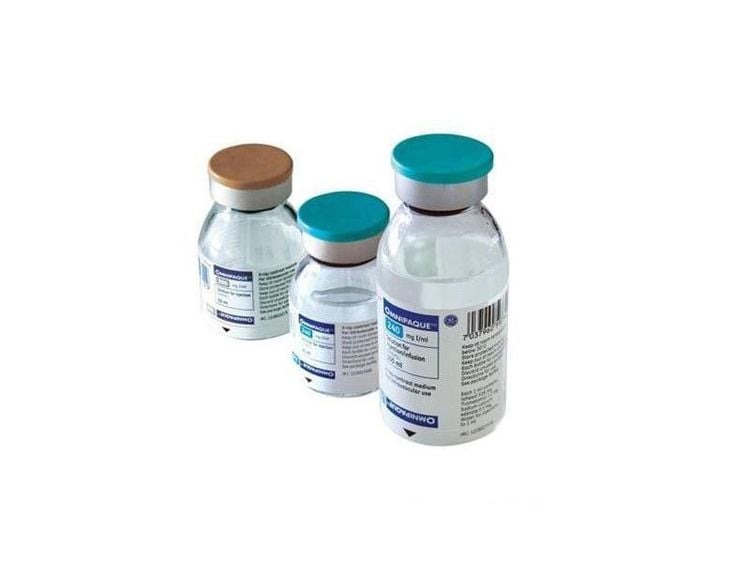
Imaging phases: 3 phases
Arterial: 7-9s after the drug reaches the descending aorta Veins: 8s later 1 Late: 8s later 2 Purpose: Assess collateral circulation, the resulting images will The cerebral artery system is modeled to reveal the pathology by the programs MIP, VRT, MPR.
Evaluation of results
Standard of photography: The image obtained should be clear, free from vibration and noise caused by movement. Displays the cerebral artery system from the base of the skull to the dome of the skull. Displays cerebral arterial collateral circulation in 3 phases. The doctor reads the lesion, describes the lesion, and prints the results.
4. The collateral circulation is divided into 6 levels: From 0-5.
Grade 0: No collateral vessels in any phase Grade 1: Only few collateral vessels visible in the occluded area. Grade 2: Slow rendering in two phases with small aperture and low density compared to the opposite side. Or it is slow to show up in one phase and there are some areas where the collateral vessels are not visible. Grade 3: Slow rendering in two phases with the same aperture and density as the opposite side. Or slow imaging in one phase, reduce the aperture and number of vessels in some areas in the area of arterial occlusion. Grade 4: Slow rendering in single phase but similar aperture and density. Grade 5: Not slow to display with normal or increased aperture, normal density Currently, Vinmec International General Hospital is equipped with a 640-slice CT scanner TSX - 301C manufactured by Toshiba capable of supporting diagnosis diagnose on an area up to 16cm wide, the fast speed allows one rotation to capture the whole heart, helping to optimally diagnose coronary, vascular and whole body. In particular, this machine can reduce up to 90% of radiation dose, so it can be taken for pregnant women when indicated.
Please dial HOTLINE for more information or register for an appointment HERE. Download MyVinmec app to make appointments faster and to manage your bookings easily.







